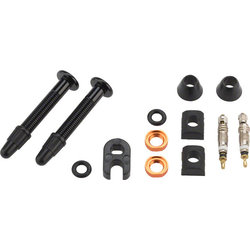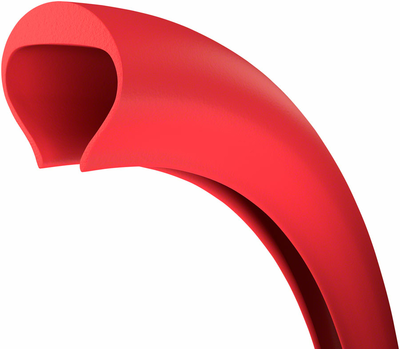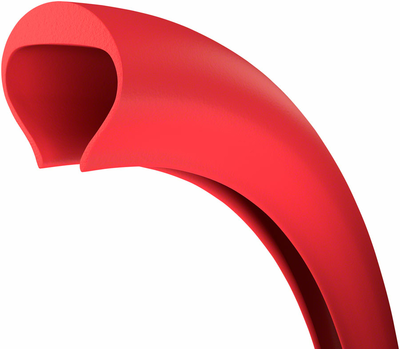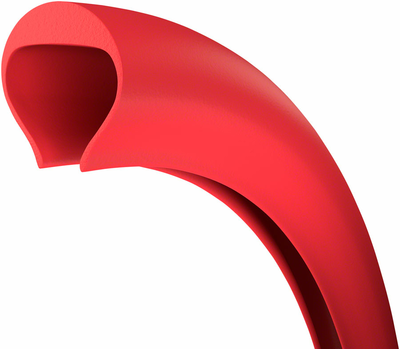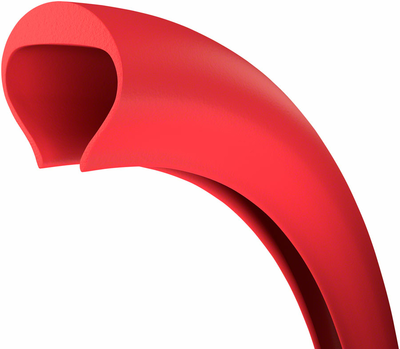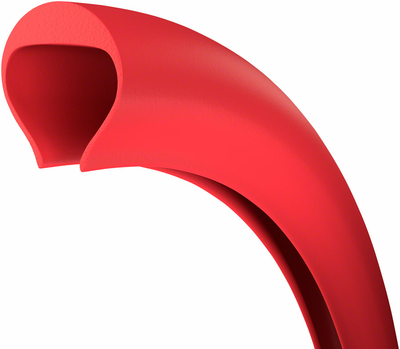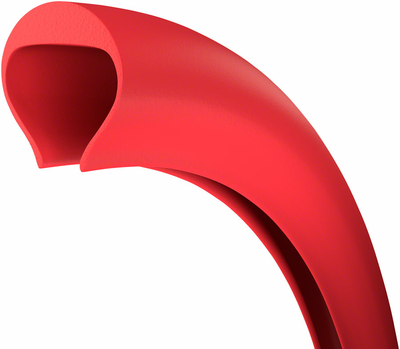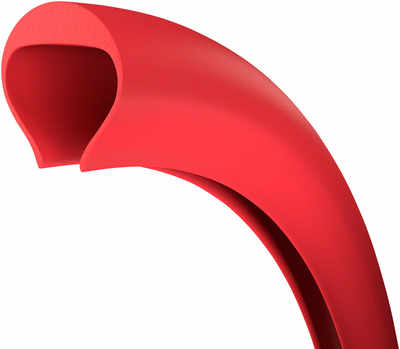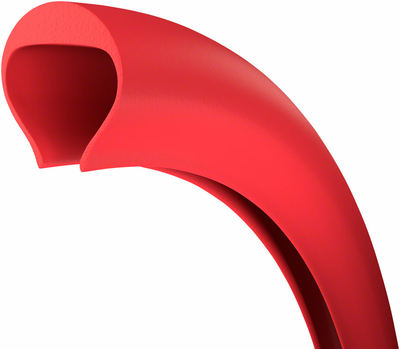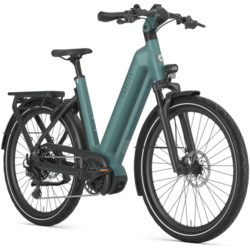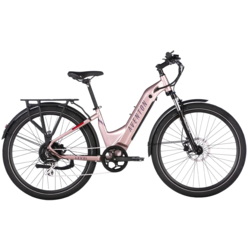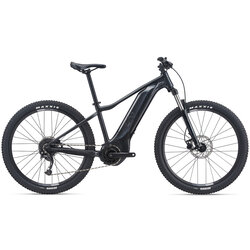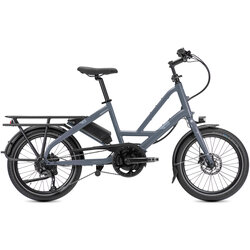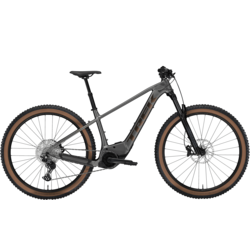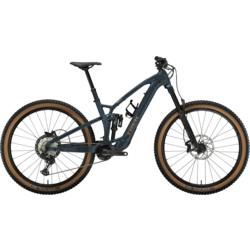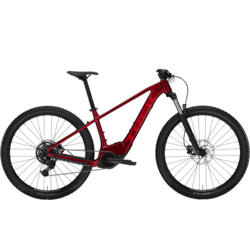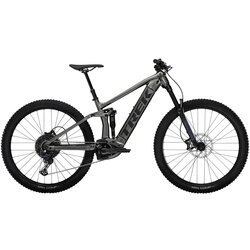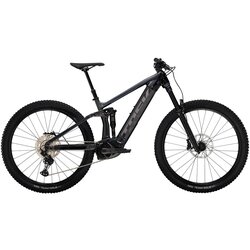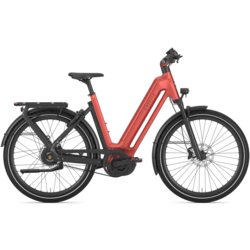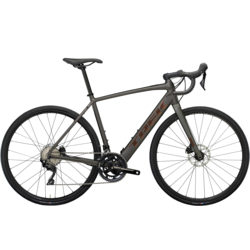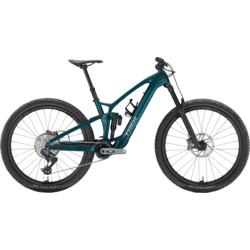How to care for your e-bike
Electric Bikes 202
Get the most Fun from your E-Bike
We've compiled a guide to help you get the longest life and best experience from your e-bike. Whether you are cruising bike paths, pushing your limits on singletrack, or just trying to get your errands done, these helpful tips will keep you and your bike rolling smoothly.
Flat Tire Prevention
There is nothing worse than trying to fix a rear flat on an E-bike with a hub motor when you have places to be. Plus, flat tires in general are a real bummer.
We offer a variety of options to help you ride flat-free, from tubeless to tire liners.
A product we really love is the Tannus liner, which greatly reduces your chances of flatting (though we can never completely eliminate it), so you can ride more confidently.
In the video, Sandy's Service Manager Owen talks us through how Tannus liners work.
It's best to install Tannus liners when you purchase your bike, but we can put them in for you at any time (and they work great on analog bikes too)!
Give us a call to schedule your install appointment, or stop by your closest store to learn more.
Optimizing Range
YOUR BIKE IS READY, YOUR BATTERY IS CHARGED. NOW WHAT?
Range anxiety is real and understandable.
Here are some steps to help you get comfortable with your bike's capabilities:
1. Take your bike for a test ride on a route you are familiar with - around your neighborhood or your favorite warm-up trail.
2. Keep the first ride short and play with the various assist modes, how shifting affects your pedaling cadence (how quickly your legs are moving), and how your brakes feel.
3. Note how much battery power was used on this ride. Make the second ride a bit longer and note how much battery power was used.
You'll soon understand what types of rides and terrain (hills, headwinds, loads of groceries) deplete your battery faster, and become comfortable maximizing your daily rides.
Your bike, and its unique motor/battery combo will have a stated maximum range from the manufacturer.
Remember, even if you run of battery power on your ride, your bike will still pedal (with a lot of help from you)!
BOSCH Range Calculator
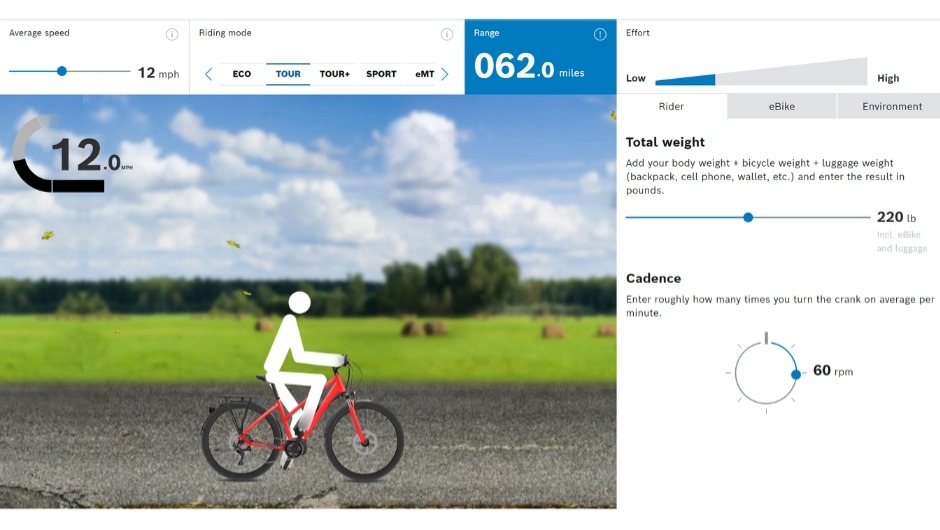
The BOSCH range calculator shown here (click it!) gives great information about how conditions and the way you ride can affect battery range. This is just an example, but it's pretty cool!
E-Bike Battery Best Practices
Get the most life from Your e-bike battery through proper care.
E-bikes and the batteries that power them are safe when properly used and maintained.
Make sure you have the Owner’s Manual and any additional literature supplied with the e-bike.
In coordination with the National Bicycle Dealers Association, we encourage adherence to the following guidelines to ensure maximum safety, utility, and life of your new e-bike and its amazing power pack.
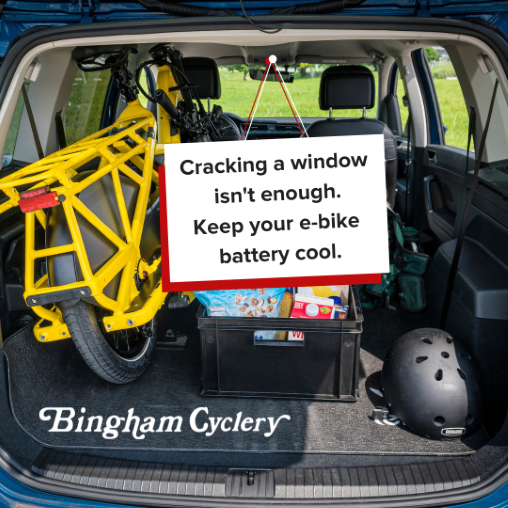
Your bike is your best friend, right? Would
you leave your best friend in a hot car in the summer? We sure hope not!
While it's fine to ride your e-bike in our hot temps, it's not ideal to let the battery sit at length in temperatures that exceed 100F.
The National Bicycle Dealers Association has published a list of E-Bike Battery Best Practices. One of those safety items is:
Store the battery pack at temperatures between 40F to 100F (4.5C to 38C).
You can also find information about temperature ranges printed on your battery, in the accompanying owner's manual, or at the manufacturer's website.

E-bikes are made to be ridden in very hot (we do live in Utah) and very cold weather (we sell e-fat bikes in the winter).
However, when you are safely storing the bikes, and specifically their batteries, temperature matters.
The National Bicycle Dealers Association has published a list of E-Bike Battery Best Practices. One of those safety items is:
Store the battery pack at temperatures between 40F to 100F (4.5C to 38C).
While we know that you'll likely pedal your e-bike outside of this temperature range, you should avoid storing the battery in very hot or freezing conditions for long periods of time.
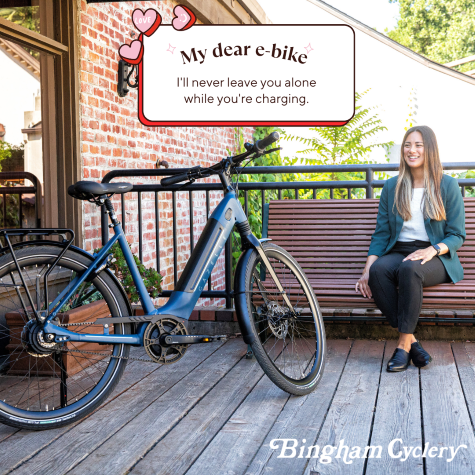
Don't let your e-bike get lonely! Keep it company whenever you're charging the battery.
The National Bicycle Dealers Association has published a list of E-Bike Battery Best Practices. These include:
Charge the battery in an area with a working smoke detector.
• NEVER CHARGE THE BATTERY UNATTENDED OR UNATTENDED OVERNIGHT. •
Monitor the battery and charger.
When the charger indicates that the battery is fully charged, unplug the charger from the wall outlet and disconnect it from the battery pack.
Do not leave the charger ON and connected to the battery pack indefinitely.
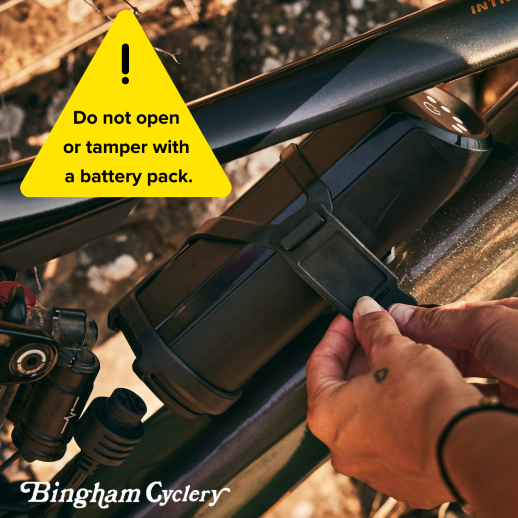
There are lots of things to tune and tweak on a bike, but an e-bike battery pack is NOT one of them. Never try to take a battery pack apart.
The National Bicycle Dealers Association has published a list of E-Bike Battery Best Practices. One of those safety items is:
Do not open or otherwise tamper with your battery pack. There are no user serviceable parts inside the battery pack. Opening the pack will void the warranty and could cause a serious problem leading to a fire.
If your battery stops working or shows any damage, we can safely package it for recycling and help you source the correct replacement.
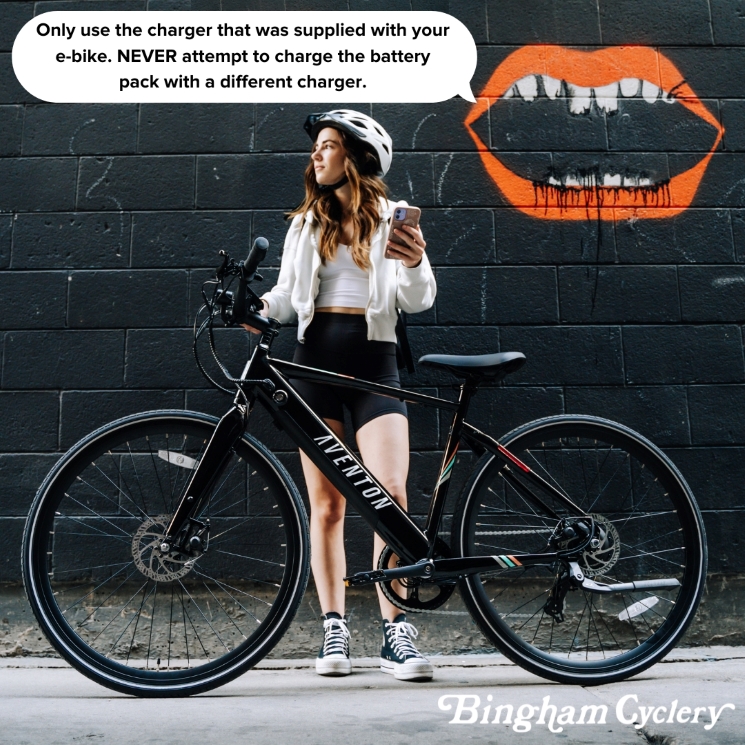
You wouldn't share your toothbrush with someone else (or, at least, you shouldn't--but that's a different conversation) and you also shouldn't share your e-bike charger.
Even if chargers and power supplies look similar, your charger is designed specifically for your battery.
The National Bicycle Dealers Association has published a list of E-Bike Battery Best Practices. One of those safety items is:
Only use the charger that was supplied with your e-bike. NEVER attempt to charge the battery pack with a different charger or power supply.
If you lose your charger or have issues with it, we can help you source a safe replacement!
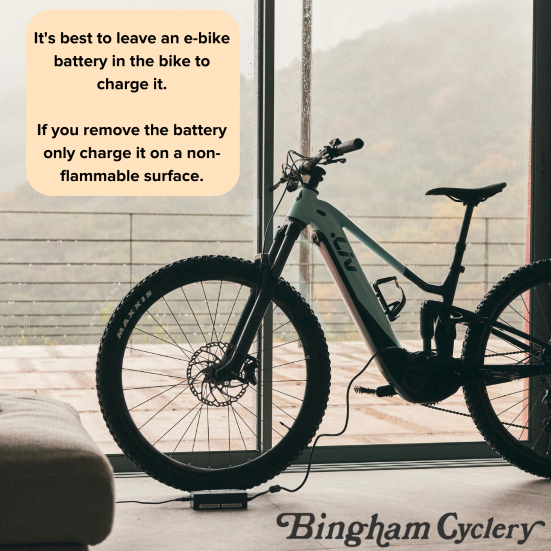
Keep it together!
Another important e-bike battery best practice, as recommended by the National Bicycle Dealers Association, is to avoid taking your battery off the bike if possible.
Not only will this keep the hardware tight and tidy, but you won't accidently introduce water or other issue-causing invaders.
Charging the battery pack ON/IN your e-bike is preferred.
However, if you charge the battery pack off the bike, place the pack on a non-flammable surface, like a concrete floor, away from flammable materials, before starting to charge it.
WHAT CAN I DO WITH MY OLD E-BIkE Battery?
Like most components on your bike, an electric bike battery will eventually wear out, not hold a charge, and need to be replaced. It's important to properly dispose of your old battery, and that's why we work with Call2Recycle to safely and responsibly recycle batteries!
When you purchase any new e-bike from us, we charge a $15 battery recycling fee to encourage you to return that battery back at the end of its life. You can also recycle batteries from bikes you didn't purchase from us for $15 each. This fee covers the safe packaging, shipping, and processing of your battery.

Shop All E-Bikes
Frequently Asked E-Bike Questions
All About Motors
Finding the best e-bike starts with finding bikes made with high quality motors. The motor is the central nervous system of any electric bike and its placement on the bike can affect the way that the bike rides, corners and handles. The best bike manufacturers design the motor to fit into the geometry of the frame, typically as replacement of the bottom bracket. This allows for the center of gravity to stay directly below the rider. The highest quality motors on the market are made by Specialized (Brose), Bosch and Shimano.
MID- VS HUB-MOUNTED MOTORS
Motors mounted at the bottom bracket, or mid-mounted, provide balanced, powerful propulsion that allows the bike to handle naturally and predictably. Hub-mounted motors may be placed at the front or rear hub. These motors are effective, but can often result in a bike feeling unbalanced or cause difficulty when fixing a flat. If you aren't sure which motor is best for you, come test ride the different styles!

ALL ABOUT BATTERIES
Most electric bikes come with lithium ion batteries that charge quickly and can be plugged into any 110v outlet. Charge times range from 3-5 hours depending on the battery and how depleted it is. Battery life (the number of times you can charge and fully discharge the battery before it needs to be replaced) lasts anywhere from 3-5 years depending on the size of the battery and the amount of usage.
WHAT DOES RANGE ACTUALLY MEAN?
Range refers to the length of distance a rider can get on a fully charged battery. Many factors impact range including size of motor and battery, weight of rider, elevation gains/losses, wind direction and more. For example, a 500wh battery will give you an additional 50% of distance than a 250wh battery. It is important to plan your bike ride based on the amount of mileage you can get out of the battery. Range anxiety happens when you are near the end of your battery’s charge yet you still have a noticeable distance to travel to get to your destination.
WHAT SHOULD I KNOW ABOUT BIKE WEIGHT?
Weights can vary a considerable amount depending on bike model and battery capacity. Most electric bikes are around 45Ibs but they can vary in weight from 30Ibs to more than 60Ibs. Cargo bikes tend to be heavier due to carrying capacity. Some batteries are removable, making it easier to lift the bike.
Remember to consider an appropriate car rack when purchasing--we recommend a receiver hitch rack.




